Today we are in Novi Sad, Serbia. Grab our passports and go!
The city was founded in 1694 when Serb merchants formed a colony across the Danube from the Petrovaradin fort. It developed into an important trading and manufacturing centre as well as a centre of Serbian culture, earning it the nickname Serbian Athens. (How that follows, I’m not quite sure!)
We had a rather strident guide. Maybe I should revise that. Extremely strident. She was a university lecturer, tourist guide and music teacher. I’ve noted earlier the need for people to hold down several jobs to make ends meet. She seemed to be doing just that. Actually, once she got over her tirade about NATO bombing the city, she was actually a very good communicator. Not saying that her comments were wrong. Maybe totally to be expected from someone who spent their formative years in a war zone. And I don’t suppose in wars that either side is ever totally blameless. As Andras had said – there are at least two sides to every argument. Listen to both – or, indeed, all of them!
All three of the city’s bridges over the Danube had been bombed to destruction during the Kosovo War of 1999. Just 20 years ago! The story we heard was that one bridge couldn’t be destroyed by NATO bombing. In the end, the locals couldn’t stand the continuous barrage so they blew it up themselves. Well, you can believe that if you want. The destruction was massive. Not only the bridges but all the infra-structure. The TV stations, the hospitals, communications, water, and electricity supplies were all targeted. Residential areas were cluster-bombed several times while the oil refinery was bombarded daily, causing severe pollution and widespread ecological damage. Officially NATO had given advance warning of targets to be hit in order to prevent civilian casualties. But you can see how that might not work perfectly.
Anyway, it’s complicated. And I’m not an expert. So I think I’ll leave it at that.
However, the area has obviously experienced a lot of unrest over the ages. We have seen remains of Roman forts. And standing atop a riverside bluff is the massive Petrovaradin Fortress. Much of the structure dates to the 17th and 18th centuries.
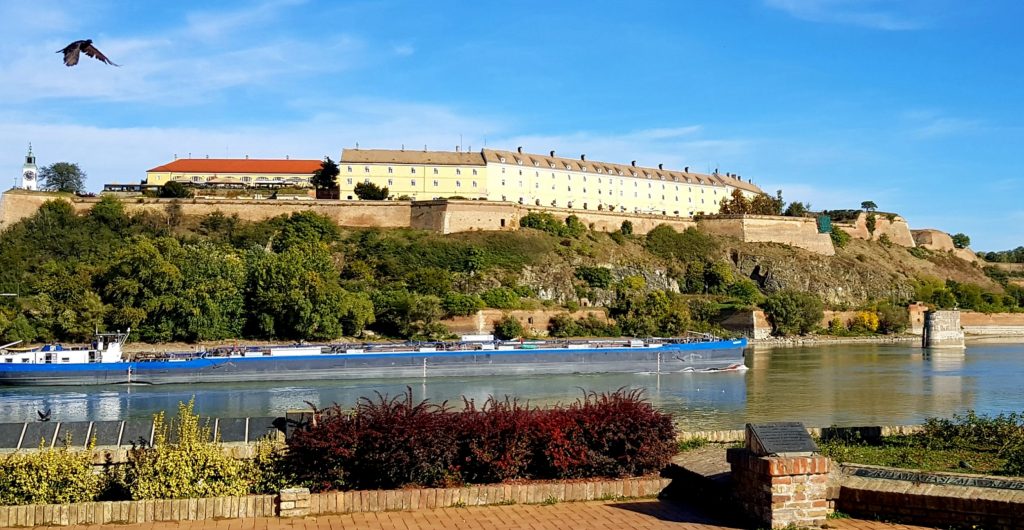
There are apparently 16 kms of tunnels under the fort on four levels. There are 12,000 gun ports and, at its peak, the place was manned by 24,000 soldiers. Allegedly the place was never taken in any conflict throughout it’s time.
Talking of time, the fort has an iconic clock. Known locally as the Drunken Clock. It’s back to front. The large hand is the hour hand and the small hand counts the minutes. I suppose if you aren’t working to a tight timetable you are probably happy to know it’s “about coffee time” or “approximately lunch time”. However, the clock is apparently always either fast or slow depending on the air temperature. Hence its name!
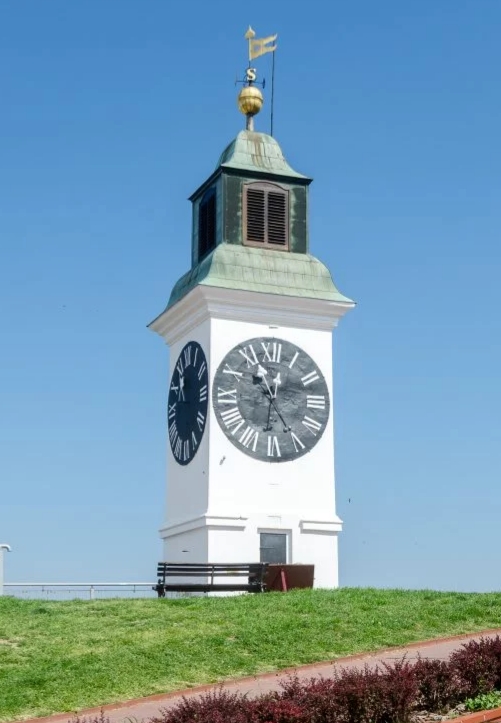
(Not my photo – we didn’t get that close! If you look at the photo of the fort above you can just see the clock at the far left hand end below the pigeon! For the record it says its 2.58 pm!)
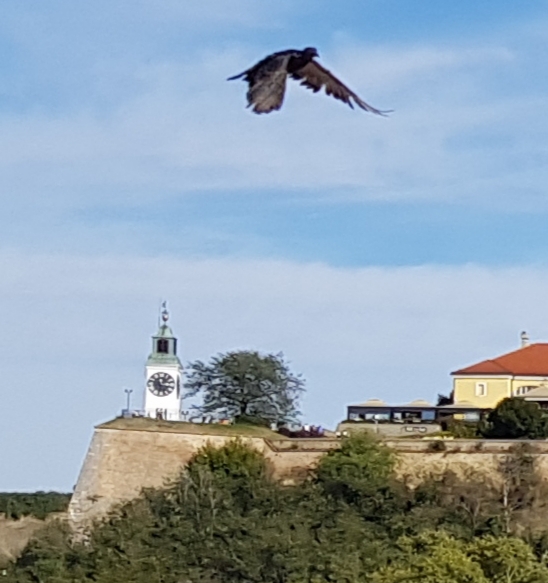
Research has shown that it was originally built conventionally, but sailors and fishermen couldn’t read the time from the river. So the hands were swapped over!
Novi Sad was founded in 1694 when Serb merchants formed a colony across the Danube from the Petrovaradin fort. It developed into an important trading and manufacturing centre as well as a centre of Serbian culture, earning it the nickname “Serbian Athens”. Although how that follows, I’m not quite sure!
In 1941, Yugoslavia was invaded and partitioned by the Axis Powers, and its northern parts, including Novi Sad, were annexed by Hungary. During WW2, about 5,000 citizens were murdered and many others were resettled. During just the three days of the Novi Sad Raid (21–23 January 1942), Hungarian police killed 1,246 citizens, among them more than 800 Jews, and threw their corpses into the icy waters of the Danube. On the river bank there is a plaque with the names of all the victims including 23 members one family. There is also a memorial statue…
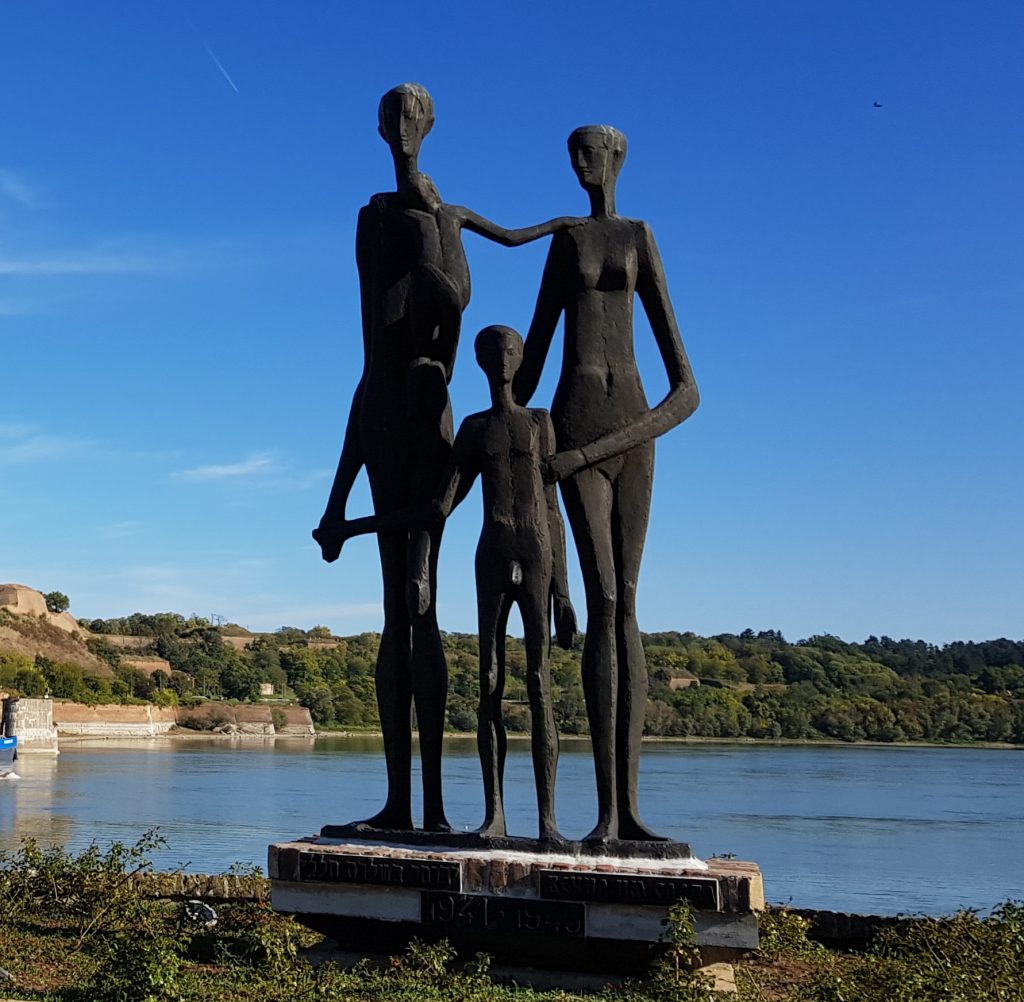
Our guide gave us a rather more gruesome version of events. She told us that the Jews were unceremoniously thrown LIVE into the river by the Fascists. That would be bad enough in Summer. But at the time the river was frozen. These poor individuals were pushed under the ice to drown. I wasn’t there, thank goodness, so I can’t really comment. Maybe Ms Strident has the correct version!
The total death toll of the raid was around 2,500. Citizens of all nationalities – Serbs, Hungarians, Slovaks, and others – who fought together against the Axis authorities.
Yugoslavia (which literally means Southern Slavs) was formed after WW2 and in 1975 the whole city was awarded the title People’s Hero of Yugoslavia. Nowadays, Novi Sad is the second largest city in Serbia – home to about 350,000 people and 35 banks! And the general view is that all 35 are money-grabbing crooks! (Just passing on the news and views!)
We walked towards the centre of town along lively streets…
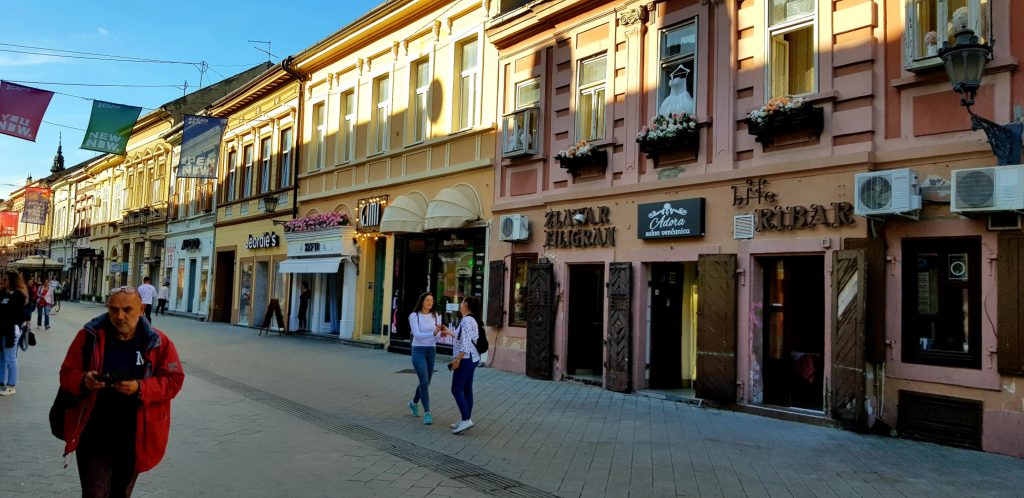
… to a square with a statue of King Peter

…and then on to the Bishops’ Palace…
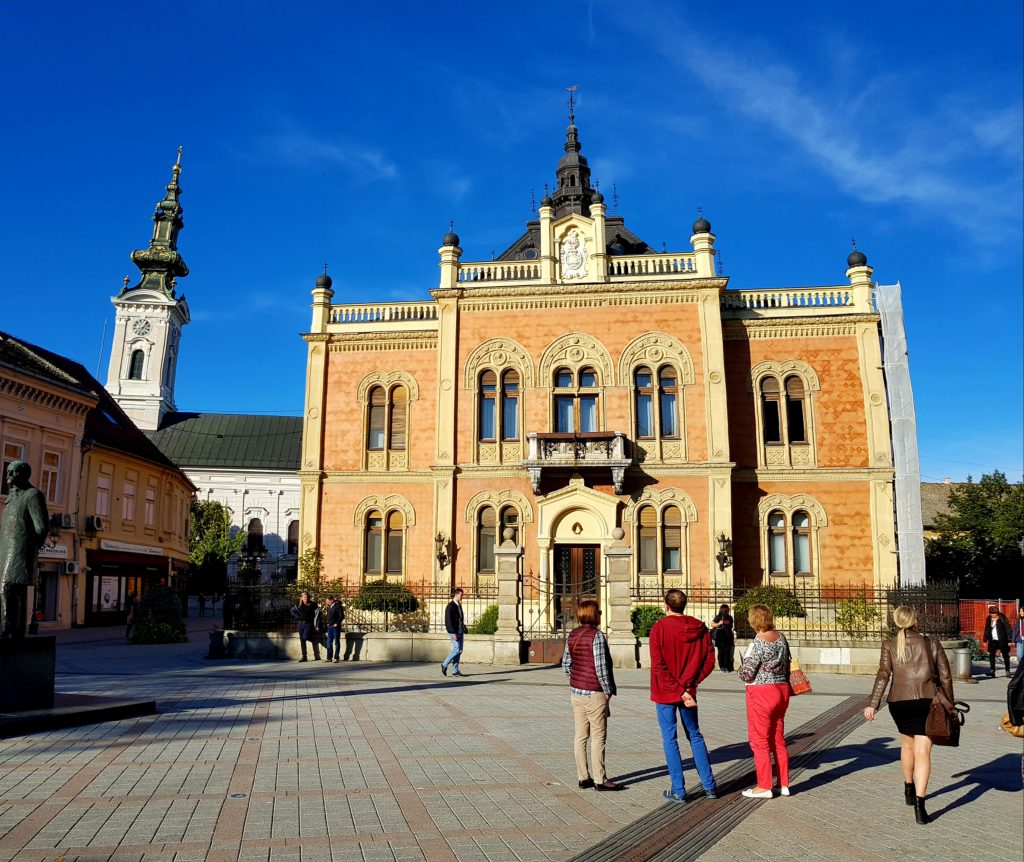
… followed by a little diversion into the Orthodox church that can be seen behind and to the left of the palace. St. George’s Cathedral. With its own iconostasis – obviously!
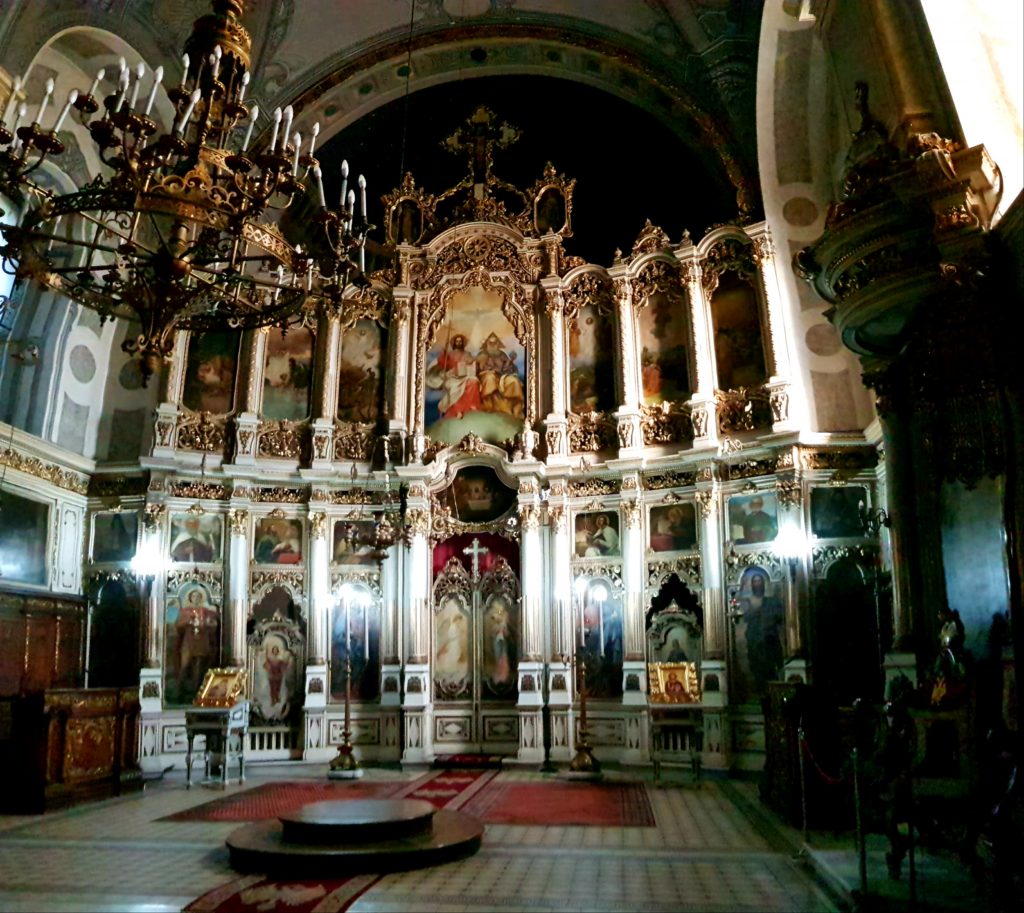
… and in the centre of the church our guide talked us through the marriage ceremony. The lucky couple who were about to get “re-married” were stood beside a lectern thing in the middle of the main body of the church. The witnesses lined up behind – for witnessing duties, obviously. But come on Tom – get your hands out of your pockets and look happy! Else Glenys might change her mind!
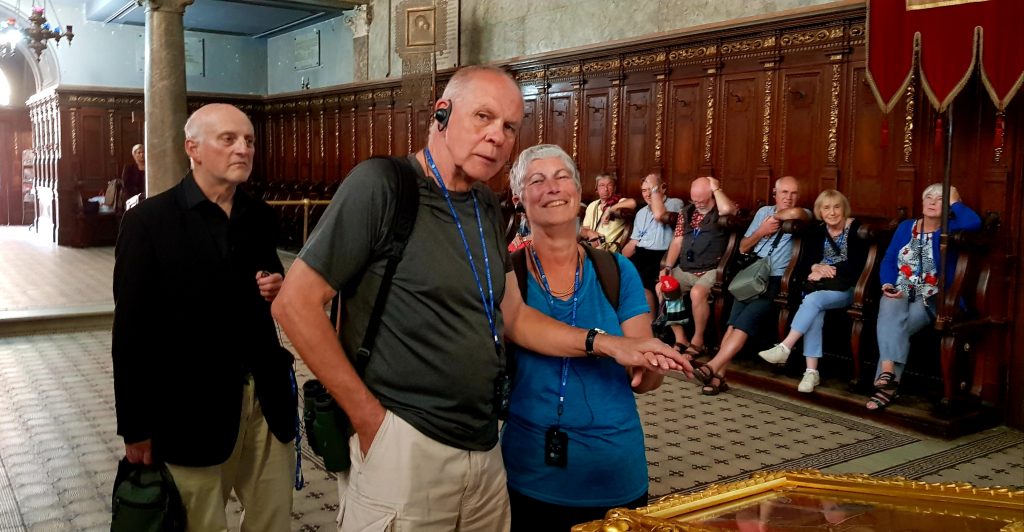
The congregation (us) decided to sit on the uncomfortable side ledges (see earlier post for more details). Weddings can take a couple of hours at least! Just imagine walking into, say Salisbury Cathedral, and acting like this! Unlikely! And, no doubt, you’d have to pay just to get in the door.
Another magnificent church – the Name of Mary church is the largest Roman Catholic church in town. It’s located in the city centre on Liberty Square.
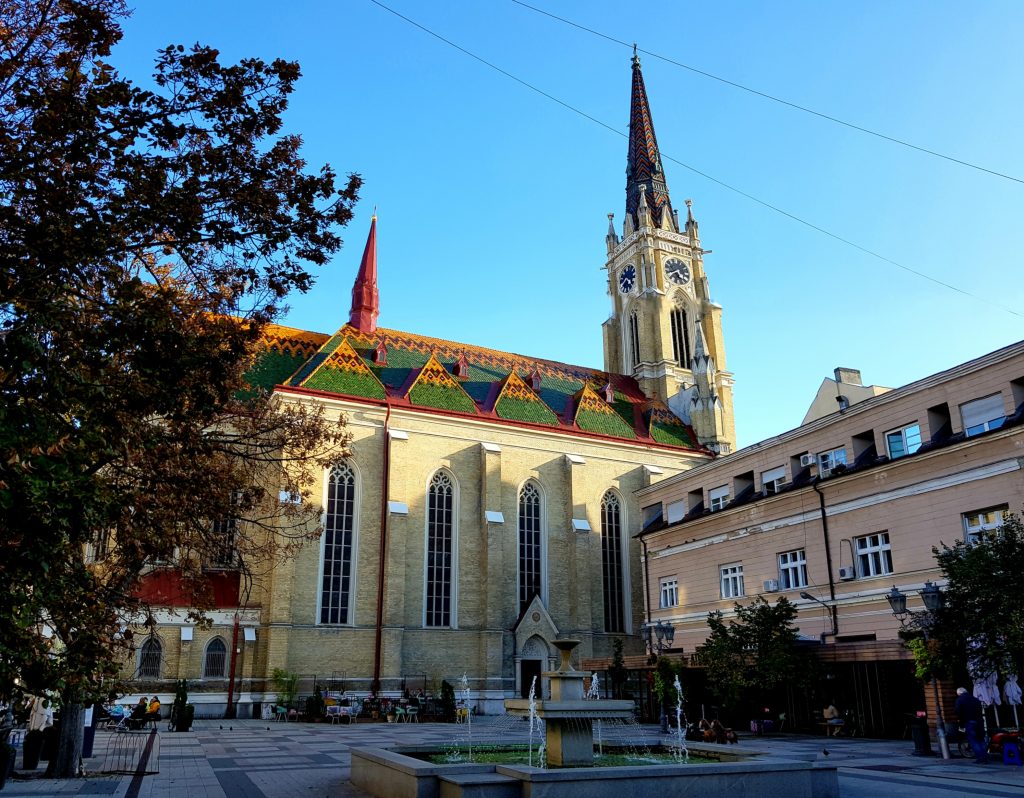
With it’s massive vaulted ceiling…

Outside, in the main pedestrian drag, there is a statue of a famous children’s poet, Jovan Jovanovic Zmaj. Obviously, famous mainly to Serbians.
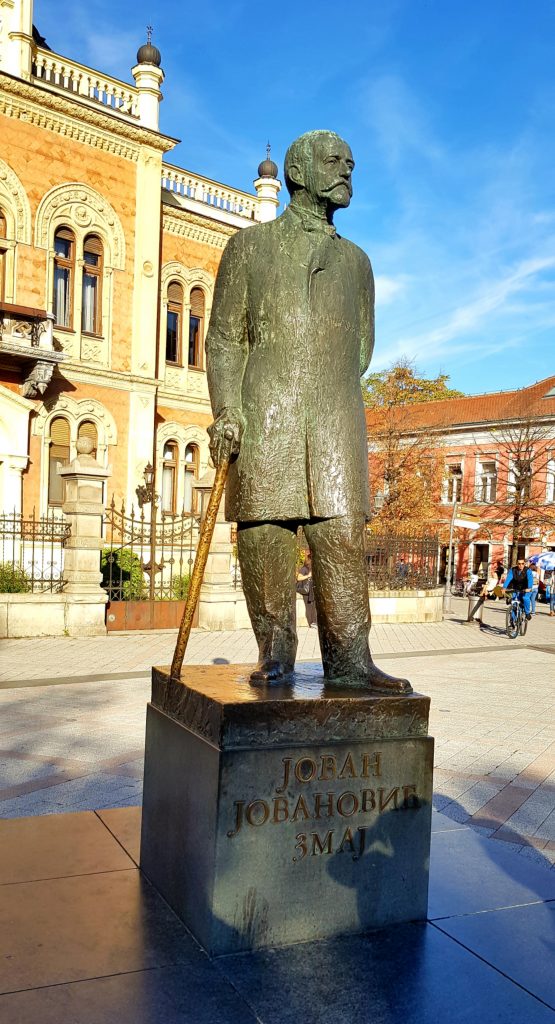
There was some weird story about how he came to focus on poetry for children. He had been a doctor, I think – but some life changing event had changed his life and he started writing poems. To be honest I’d kind of switched off to our guide by this stage. It was getting chilly and we needed a coffee (and a loo). So that’s what we did – on Liberty Square looking at a statue of a (mad) mayor (Svetozar Miletić) giving a rather “unsavory” arm gesture. That and his fly-away coiffure reminded us of Boris (who has just agreed to call an election to see if we really meant what we said three years ago) .
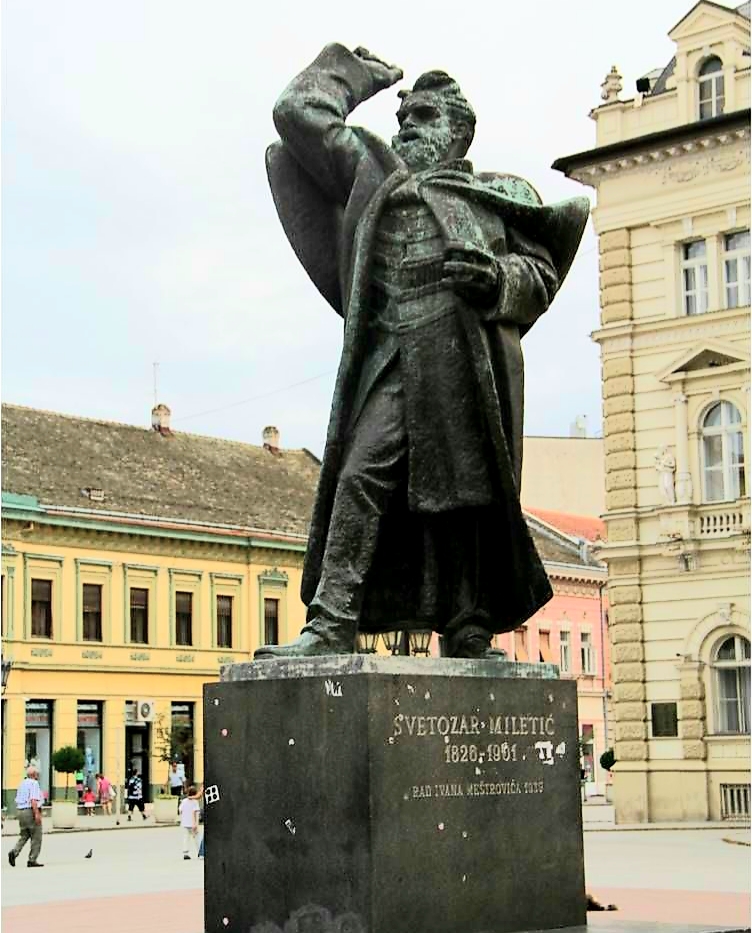
OK. That’s Serbia’s position. Tomorrow we get to visit Croatia. But that’s another story!
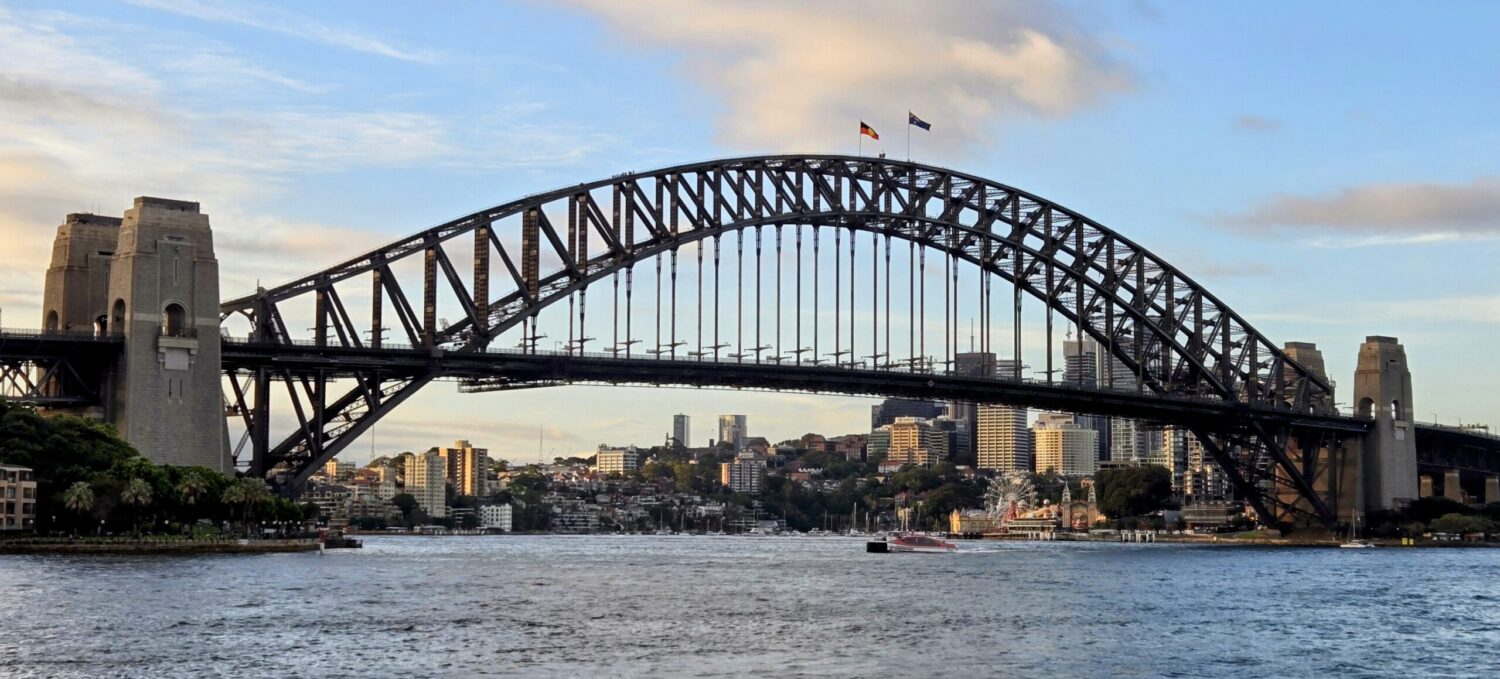
So e joy reading your blogs….keep them coming…….and aren’t their churches/cathedrals amazingly opulent given the poorness of the people and other buildings!!!!
Can’t wait to read your take on Coatia ..one of our favourite countries.
Big hugs and seven kisses
Xxxxxxx
Militec looks like he’s bowling a Googly.